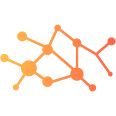
As a consultant in technology and Internet innovation strategies I always say to my clients that they must think outside the box. Accomplishing this is not an easy task but it is necessary in order to break paradigms and resolve problems with ideas that are unconventional and original and that may change the way in which things have been done for a long time.
I think that in the last decades the enterprises have made a big effort in order to change the way they think. Examples of this are the new areas of R&D that many businesses have created. Unfortunately creating areas that think in a different way is not enough. All the company and all the employees must change their way of thinking if they really want to differ themselves from their competitors, which is a difficult task because we where not raised in this way.
Even though the process to change the way we think is difficult I have learned that with the help of some tools we can accomplish this objective. In this post I will mention some of my favorite ones. Please feel free to complete this list if you have used other tools with the ones you have also accomplished great results.
The first tool I will mention is to hear the opinions according to the problem of the different stakeholders. Many times people center their vision in what they see about the problem. In this way it is very difficult for them to see the whole issue, and they leave behind many things that matter. In this way what the tool accomplish is to magnify the vision they have with respect to the problem so they can propose better solutions. The execution of this tool is quite easy and is attained with interviews to all stakeholders.
The second tool I will introduce is related with the first one, but this time instead of asking the opinion to the different stakeholders, you will ask to the employees in charge of the solution to think as the different stakeholders. This is what is commonly known as being in somebodies else’s shoes. This tool is useful because the people that are in charged of the solution of the problem will understand the meaning of each proposal for each stakeholder.
The last tool I will talk about is to investigate how other people have resolved similar issues. In this way you can obtain different visions of how to approach similar problems. I am not suggesting copying the solution, actually I am against plagiarism, but I think with this exercise you can find the inspiration you need in order to resolve your problem in a new way.
Before I finish I want to remind you that even though our society did not teach us to think in a creative an innovative way, it is possible to do it, and tools as the ones I just described can help you to find the path to solutions that break paradigms.
Image taken from Flickr.com
